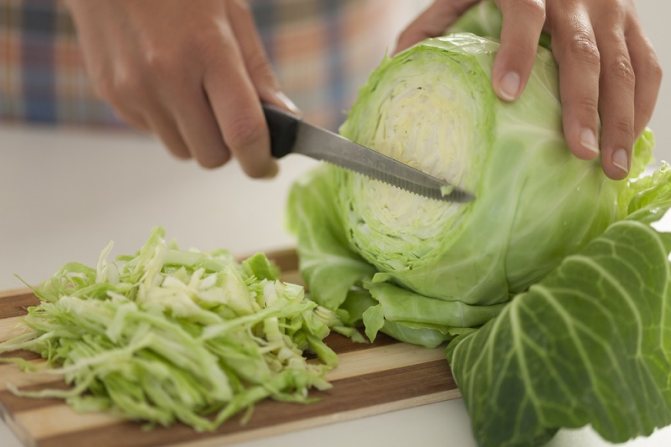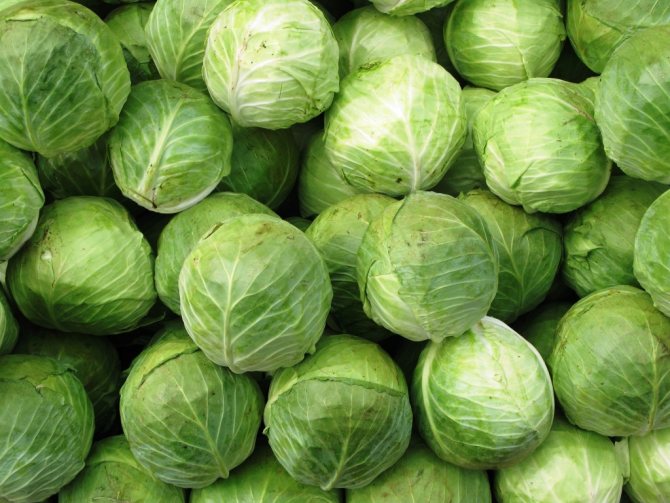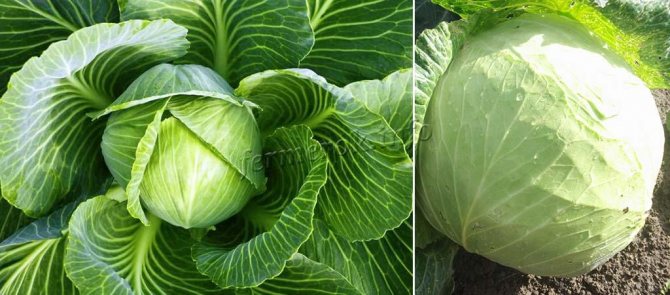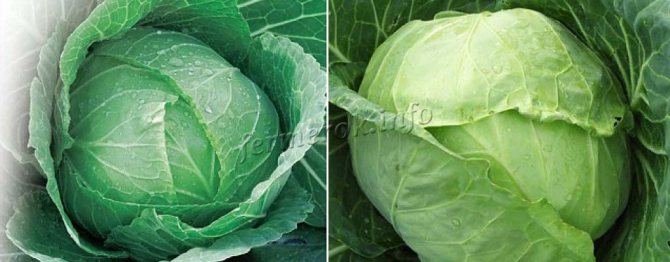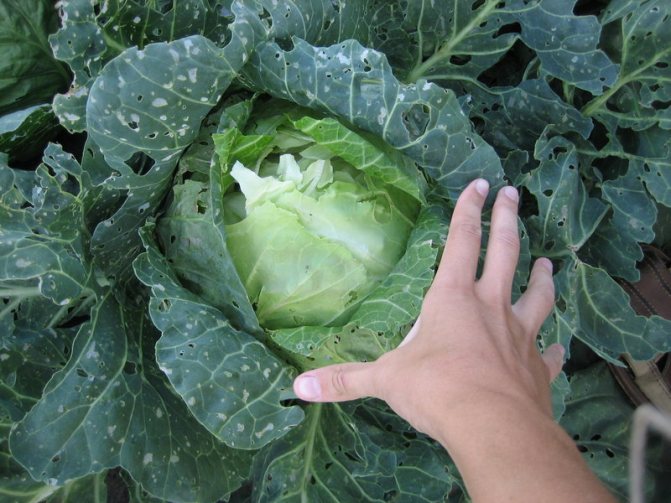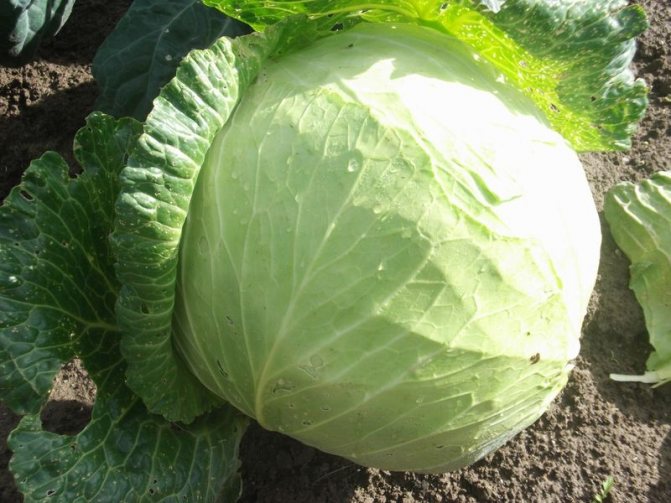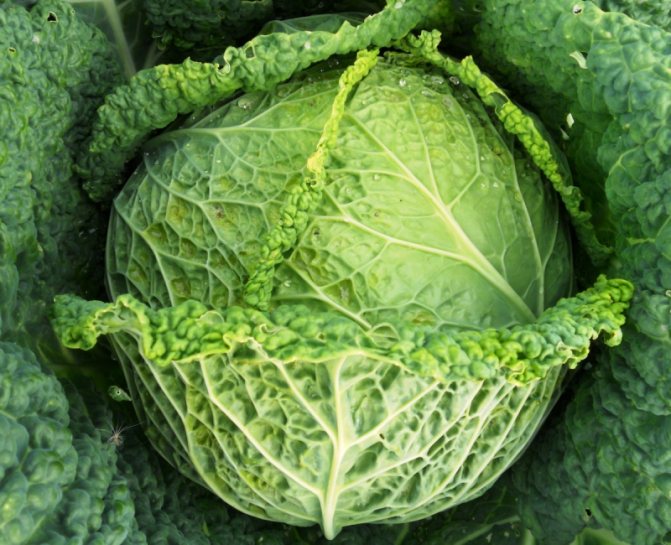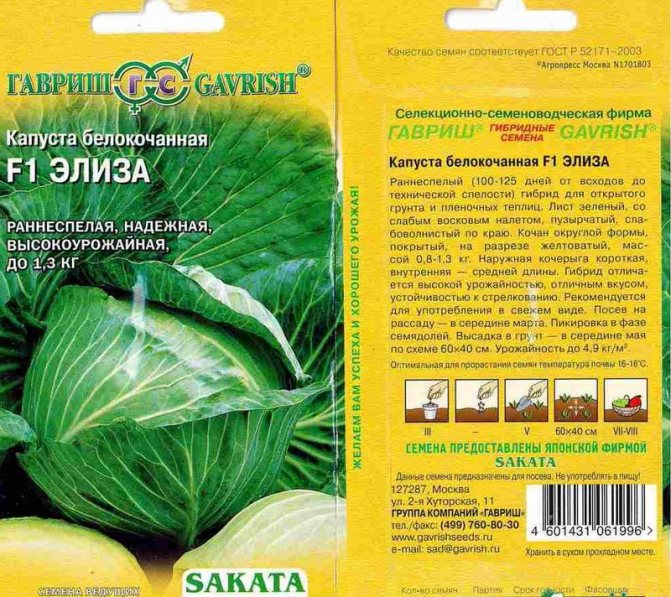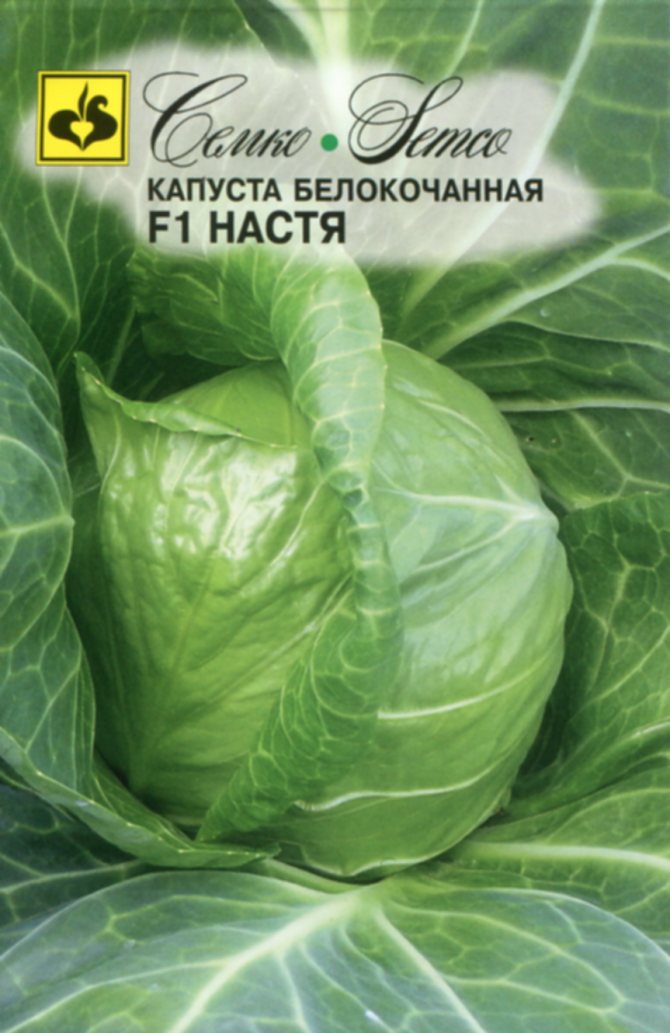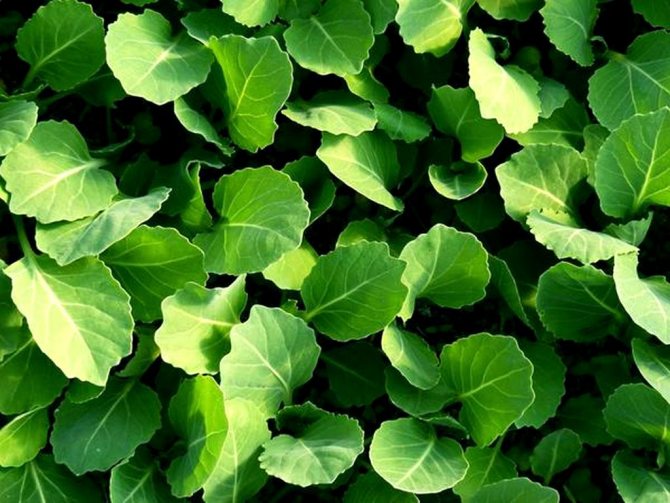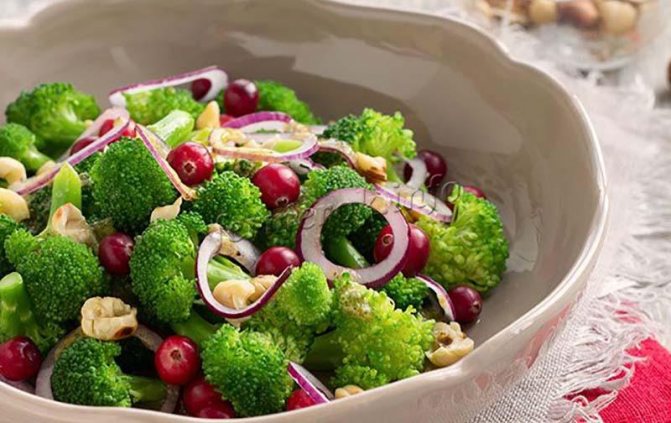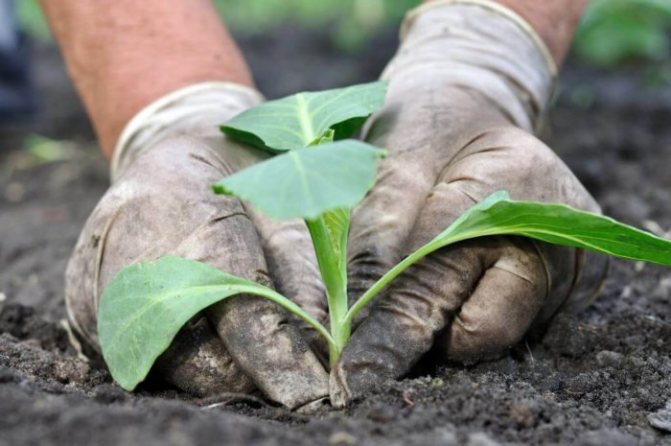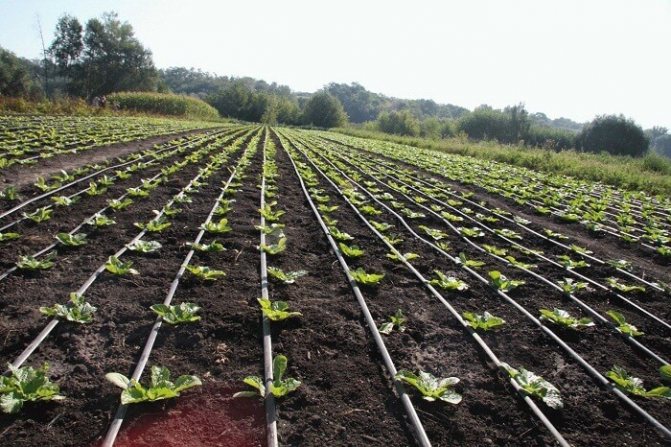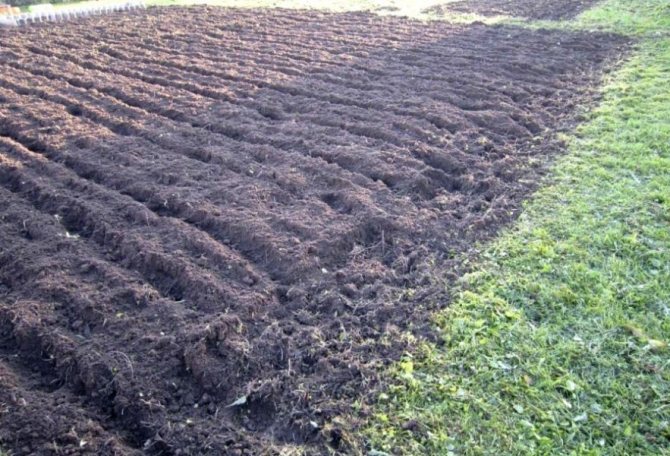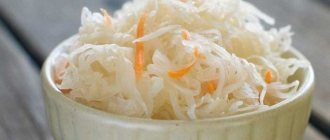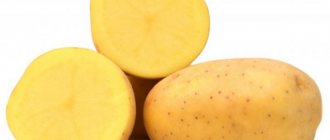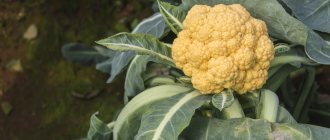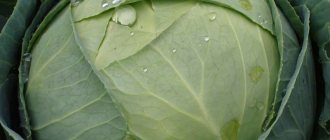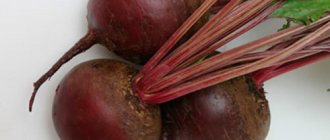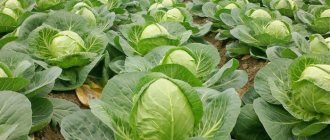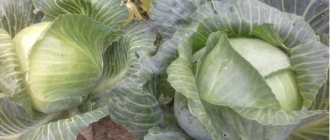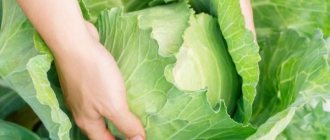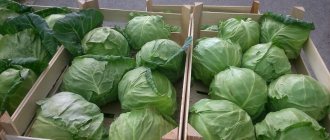The vegetable is not difficult to grow. Compliance with just a few planting and care rules will provide the summer resident with a cabbage harvest sufficient for the family. One of the components of the harvest is the correct choice of the variety.
Early cabbage: the best varieties
It is recommended to choose a suitable variety for planting according to the following criteria.
- The number of warm, sunny days (the duration of the actual, not calendar summer in your area).
- Conditions for using the future harvest (fresh, for conservation, for long-term storage).
- The volume of the planned harvest.

Choosing early cabbage varieties
The first criterion is important because different cabbage varieties require different ripening times. The choice of the optimal ripening period, as well as the planting method (seedling or seedling), depends on the length of summer.
The second criterion is taken into account when the intended use of the crop is assumed - harvesting for the winter and storage until spring, salting or pickling, fresh use during the summer, for salads and first courses.
The third criterion directly depends on the variety. The most productive varieties are winter, subject to a sufficient number of warm days and complete maturation of the heads.
general characteristics
It is customary to refer to the early varieties of cabbage that form good forks over a period of 50 to 120 days. For the formation of a fork of a thermophilic white cabbage in the middle and more northern latitudes, the warm season may not be enough. For example, the average climate indicators of the Moscow region require cabbage ripening for about 135 days. The problem is solved in two directions - planting by seedlings and rapid growth due to the use of early ripening varieties.
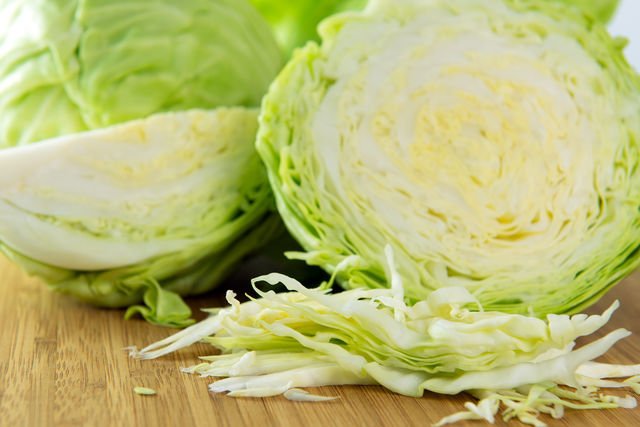

Early ripe cabbage is notable for its small size, juiciness and increased friability. If not harvested on time, they easily overripe and crack. Compared to late species, their yield is low. But everything pays off with their rapid growth and excellent taste. In addition, they are easier to put up with dense and poor soils. Let's take a look at the early varieties that have proven to be the best.
Delicious pickled cabbage
A very simple cooking recipe is captivating to cook such cabbage quite often. Prepares quickly, eats quickly and tasty.
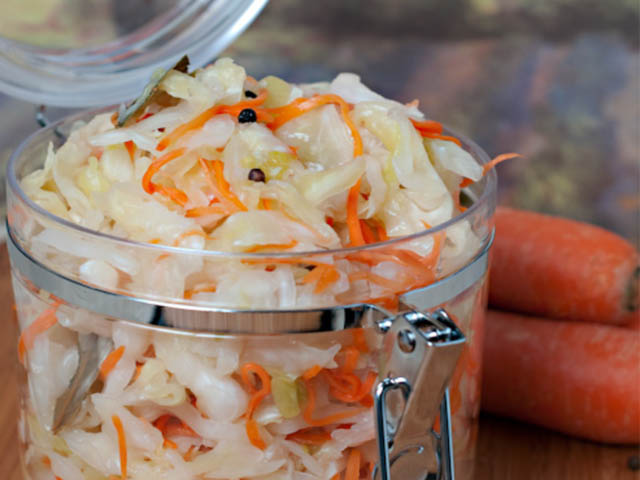

- cabbage - 1 fork per 2 kg
- carrots - 1 pc
- garlic - 4 cloves
- water - 1 liter
- salt - 2 tbsp. spoons
- sugar - 2-3 tbsp. spoons
- allspice - 4-5 pieces
- peppercorns - 10 pcs
- cloves - 5 pieces
- bay leaf - 3 pcs
- vinegar 9% - 100 ml (or apple cider 6% - 150 ml, or 1 half teaspoon essence)
1. Chop the cabbage into thin strips. You can use special graters, knives or a food processor for this. Or just cut it with a regular knife. But you need to cut it as thin as possible.
For crispy pickled cabbage, choose tight, strong forks for its preparation.
2. Peel and grate carrots for Korean carrots.
3. Stir the cabbage and carrots in a large container; it is good to use a basin for this purpose. No need to crumple.
4. Cut the garlic into thin slices.
5. Prepare the marinade. Boil water, add all ingredients except vinegar. Let it simmer for 5-7 minutes. Turn off the fire.
6. Add vinegar and garlic.
7. Get the bay leaf. And then, hot, pour into the cabbage with carrots.Mix gently. Let stand to cool completely. Stir the contents periodically.
8. Transfer to a three-liter jar with the marinade. There is no need to report to the very top. Refrigerate overnight. The next day, you can already eat cabbage.
9. But it will be the most delicious for 2-3 days.
When serving, ready-made cabbage can be poured with olive or other healthy oil. You can serve it as an appetizer or salad, adding chopped onions or fresh herbs to it. You can make a vinaigrette from it, it turns out it is very tasty and aromatic.


The cabbage itself has a sweet-sour-salty taste, it crunches pleasantly, and turns out to be very tasty! And although now you can buy pickled cabbage all year round in the store, but it will not be as tasty as your own homemade one.
And as you can see, preparing it is absolutely no difficulty, and it will take half an hour at most.
"Cossack F1"
A selection hybrid of very fast ripening - after planting seedlings, the first forks can be cut after 40-50 days. It will take 60-70 days from planting seeds to harvesting. The fruits are small, beautiful, light green on the outside and pale yellowish on the inside.
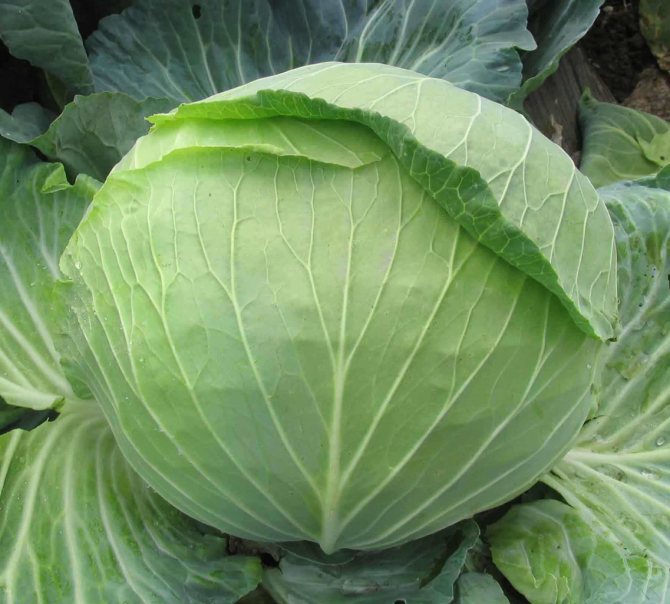

Average density, weight up to 1.5 kg, taste without the presence of bitterness. Sensitive to soil fertility, but also ripens on poor soil. Not prone to cracking, tolerates cold nights, is not susceptible to rot and flea beetles.
Other varieties of white cabbage


Pandion F1
Dutch selection
Dutch cabbage hybrids have high ecological plasticity and grow successfully in various climatic zones. The Dutch assortment is regularly updated.
- Bourbon F1
- Green Flush F1
- Pandion F1
- Parel F1
- Champ F1
Resistant to cracking
Modern hybrid varieties of early cabbage are suitable for gradual harvesting (over 3-6 weeks), since they do not crack after gaining maximum weight (1.5-2 kg). This feature is laid down at the genetic level. Particularly resistant, they do not burst even in rainy weather.
- F1 Asian Express
- Hermes F1
- Zenit F1
- Candisa F1
- Nozomi F1
- F1 start
"June"
One of the most popular early and amicably ripening varieties for unprotected soil. Two months after planting, the seedlings can be harvested up to 4.5 kg from each sq. M. Calmly tolerates short-term drops in temperature. Round forks, the same size, with a good delicate taste, weighing up to 2.5 kg. It takes 92 to 100 days to reach full technical maturity.
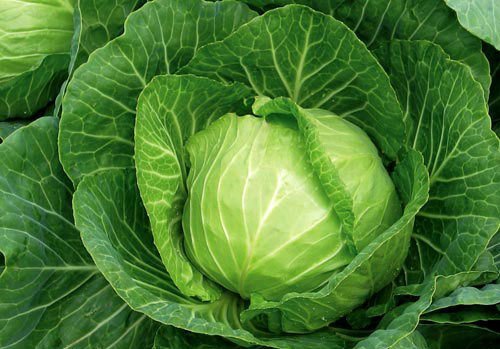

Withstands short drops in night temperatures down to -5C, therefore, allows landing in the first half of May. Maturation is amicable. Cracking resistance - medium.
Bomb cabbage
- Cabbage - 2 kg.
- Carrots - 0.4 kg.
- Garlic - 4 cloves
- You can add an apple, beets
- Vegetable oil - 150 ml.
- Vinegar 9% - 150 ml.
- Sugar - 100 gr.
- Salt - 2 tbsp spoons
- Bay leaf - 3 pcs.
- Black peppercorns - 6 pcs.
- Water - 0.5 l.
How to make bombshell:
1. Chop everything, grate the carrots, cut the garlic into slices. Store tightly in a jar.
2. Pour all the ingredients for the marinade into a saucepan and boil everything for 5 minutes. Pour the boiling marinade over the cabbage.
"Dumas F1"
Ultra-early category, low density forks. Medium-sized heads of cabbage can be obtained three full months after sprouting. The leaves are tender and juicy, light green on the outside, straw-colored inside.
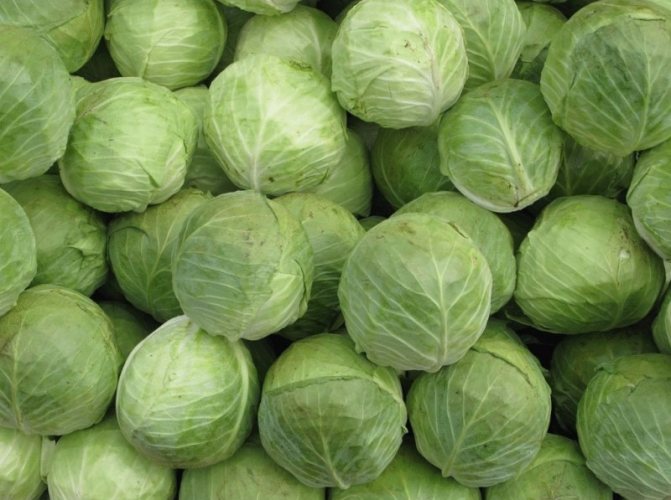

Gives a stable high yield. The advantages also include good preservation in case of untimely harvesting, resistance to cracking.
Dumas F1 is a good choice for small-sized areas, as it tolerates dense plantings well.
Chinese cabbage and savoy cabbage
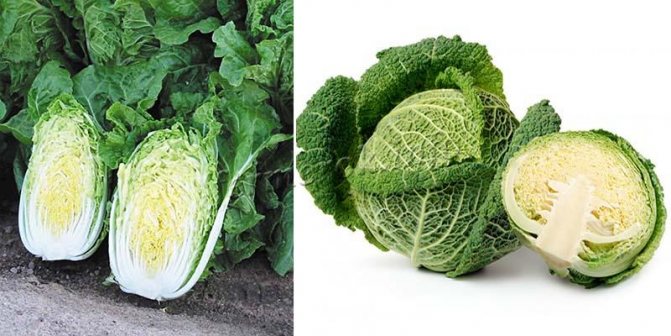

Beijing and Savoy
It is impossible not to mention Peking and Savoy cabbage. These species, although not very popular in cultivation, have many fans. They have an unusual, pleasant taste, universal application.
From the early varieties of Savoy cabbage, you need to recommend: "Jubilee", "Zolotaya early", "Julius F1". Their ripening period is less than 120 days. They have delicate leaves that crunch a little when bitten off, fresh taste and aroma.
Beijing early varieties ripen in about 35 days from the day the sprouts appear: Asten, Voronezhskaya, Naina, Lenok, Lyubasha, Vesnyanka. Their weight rarely exceeds 250 g. Crops are resistant to flowering, have a pleasant taste, juicy veins.
"Parel F1"
The yield of this hybrid is up to 5 kg from 1 m2 of unprotected soil. In terms of ripening, it belongs to the medium early, ready for about the 95th day. Forms flattened heads of cabbage, which during this period can gain a mass of 2 kg. The color of the leaves is muted green with the presence of a slight white bloom.
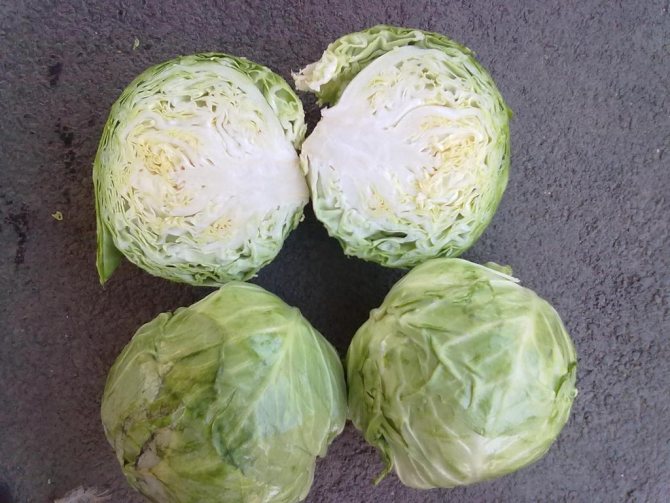

Density - higher is more harmful, due to which it allows transportation. It can be stored for up to two months, which is a good indicator of keeping quality for early cabbage, but in general it is intended for quick processing and consumption.
The Parel F1 variety is one of the richest in vitamin C. It can be recommended for dietary and baby food.
TOP-10 early maturing varieties
"June"
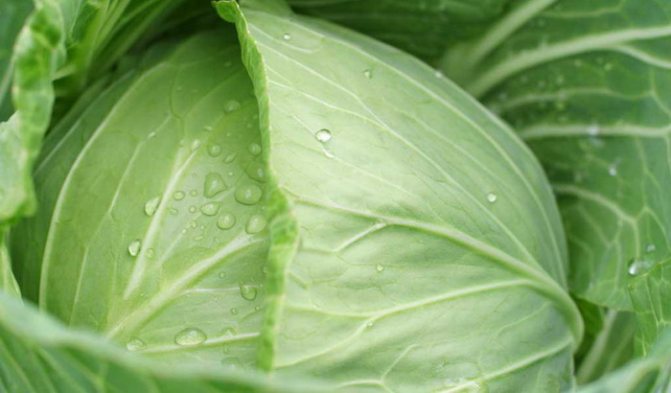

"June" cabbage
The name of the variety speaks for itself. Heads of cabbage can be harvested at the end of June, since the ripening period is 90-100 days. The fruit is round, elliptical, medium density, the head of cabbage is not loose. The stump is through, the size of the heads of cabbage is small, but they are rather heavy - two or more kilograms. Productivity - up to 5 kg per m².
By the way! The variety is characterized by increased cold resistance, can withstand for a short time up to -5 ° C. Therefore, it is suitable for outdoor cultivation. Seedlings can be planted in the ground early (early May).
The peculiarity of the variety is that all forks ripen almost simultaneously and of the same size. High marketability, green-lime color of the leaves. Harvesting must be on time or the forks will crack.


June white cabbage
In structure and taste, the leaves are quite tender, juicy. High content of vitamin C. It is used fresh.
Advice! To prevent the heads of June cabbage from cracking before harvesting, minimize temperature drops (shelter for the night, if necessary) and soil moisture (compliance with the irrigation regime).
"Kazachok"
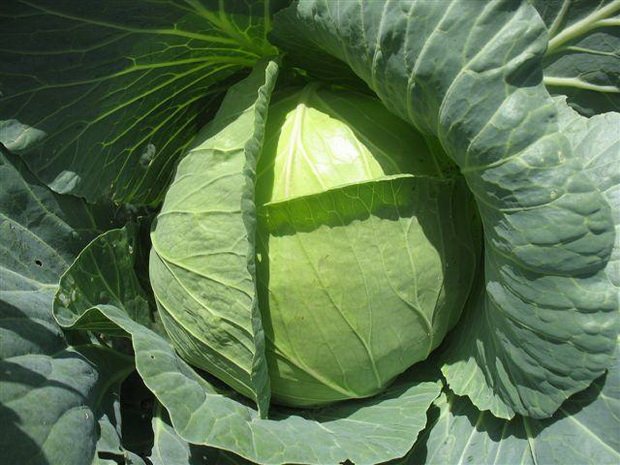

White cabbage variety: Kazachok
An early ripe hybrid that has several advantages over non-hybrid varieties.
- Disease resistant.
- High-yielding.
- Heads of cabbage do not crack.
Its "official" name is "Cossack F1". The leaf rosette is raised. With a trunk height of up to 30 cm, the head diameter can be up to 18 cm. The shape is slightly flattened. Coloring for white-headed varieties is not typical. Outside, the leaf is greenish-gray and covered with a waxy bloom. The inside of the head is creamy white, juicy and crunchy. The stump is not through, no longer than 6 cm.
Forks ripen in time closer to the average varieties - up to 112 days. But with small and rather light heads (no more than 1.2 kg in weight), more than 4 kg of heads of cabbage are harvested from a square meter.


Cossack F1
By the way! Increased selection resistance to bacteriosis, black leg and other damaging factors allows to obtain forks of high quality and excellent presentation.
This hybrid is cold hardy. You can plant in unprotected soil at a fairly early date (mid-May). The simultaneous readiness of the crop provides the possibility of a quick one-time harvest. The variety is intended for fresh use.
"Parel"
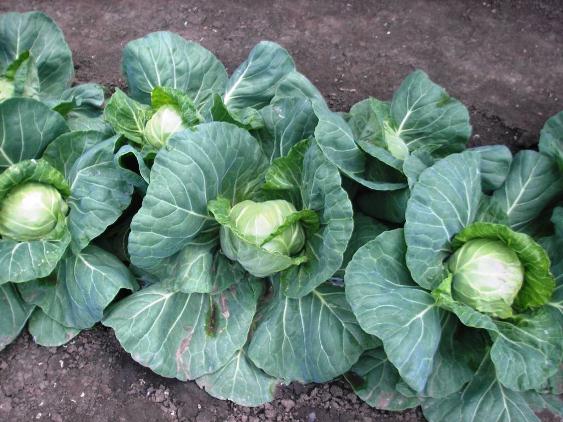

Cabbage "Parel F1"
The variety must be in your garden collection of early ripe cabbage plantings.Its yield is up to 5 kg per square meter. Grown in the open field. It is very early in terms of ripening - ready on the 95th day.
The flattened heads of cabbage are medium in size, but by weight they have time to grow up to 2 kg in 3 months. Color - dull green with a barely noticeable white bloom. The stump is medium in size.
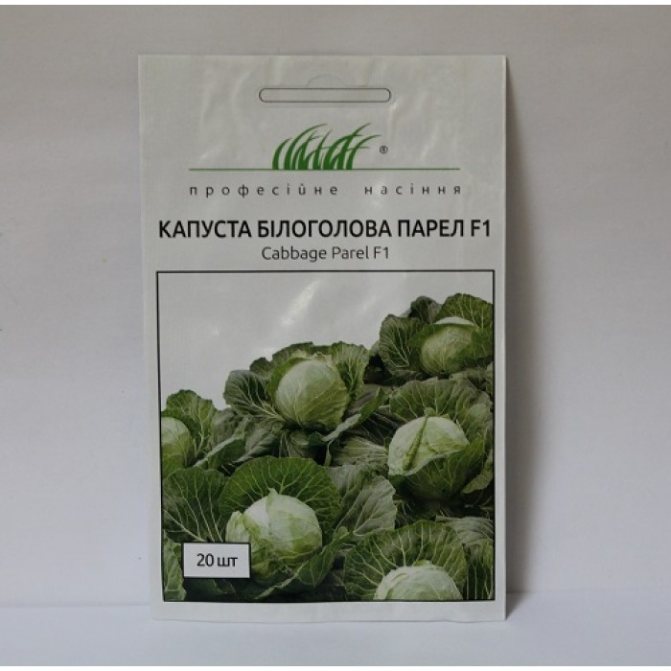

White cabbage Parel F1, seeds
They are not subject to long-term storage, but if necessary and under conditions can be stored for up to two months Mainly used fresh and processed. Above average density of the head of cabbage makes it possible to transport without damage over long distances.
By the way! This variety contains so much vitamin C that it is recommended for the dietary nutrition of sick and weakened people, as well as for baby food.
This variety is a real bestseller among the early ones. He has time to ripen, especially with early planting, and has a high yield, and is stored, even if not until spring, but for a couple of months for sure. To accelerate fruiting, "Parel" can be grown in greenhouses.
"Ditmar Early"


Ditmar cabbage (early)
This variety is really early - it ripens in 105 days. But it has a high risk of cracking. Round-shaped heads of medium density are small in size and weigh up to one and a half kilograms (with good care - two).
The stump is half, very small and inconspicuous. Leaves are bright green, delicate, soft silk texture. In terms of taste, it is close to Peking. The yield for such a small-fruited variety is excellent - up to 5 kg per m².


Dietmar early cabbage
It is not stored for a long time, it is used immediately after harvest or for canning. Heads of cabbage ripen well and almost simultaneously.
Advice! As soon as technical ripeness has come, the crop must be removed - otherwise, the degree of cracking may be higher than 90%.
Plants are resistant to bacterial rot, keel and other cruciferous problems.
"Golden hectare"
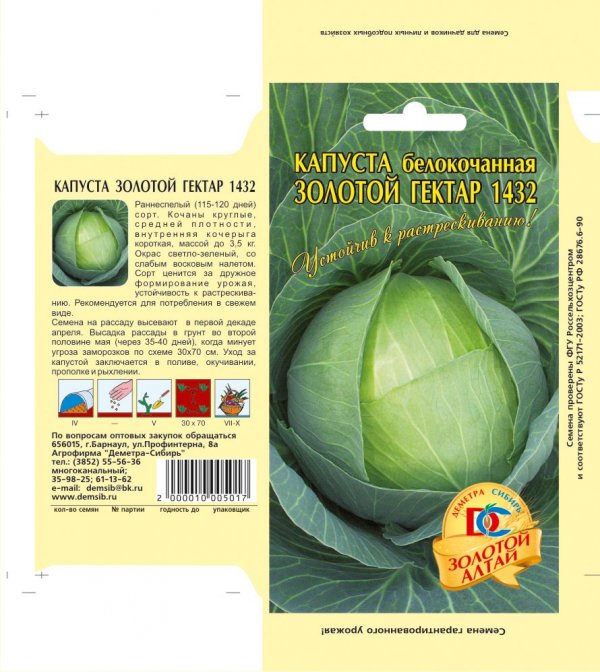

"Golden hectare"
This species has many fans, since it has a high yield (up to 7 kg per square meter). Light green head of cabbage, sizes higher than standard (weight up to 2.5 kg). Ripening period - 110 days.
Keel resistant, dry climate. Unfortunately, other diseases and pests affect it very actively, so it is necessary to take preventive measures in time.
Heads of cabbage are dense. Can be stored for up to five months. They are used fresh and for all types of canning.
Advice! The peculiarity of the variety is its high demands on the soil. It will grow well only in fertile soil. Chernozem and regular abundant feeding are preferable.
Doesn't actually crack. Not afraid of untimely cleaning. Prolonged harvesting for the state of consumer, rather than technical ripeness, is practiced before laying for autumn-winter storage.
Copenhagen Market
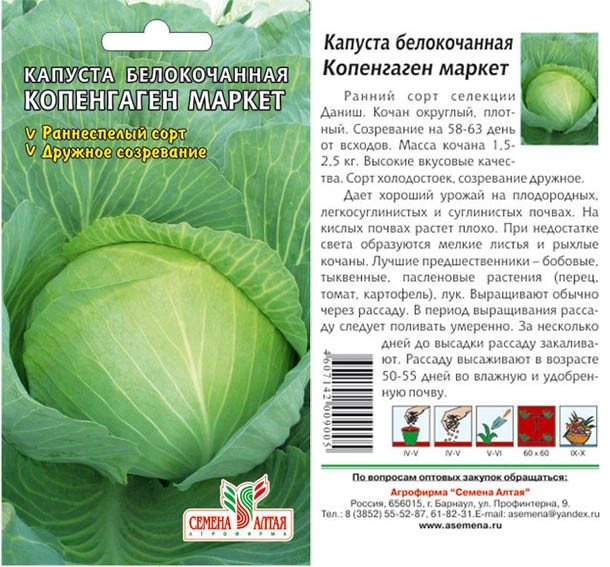

Copenhagen Market
The variety came from Denmark, but in terms of quality it is not inferior to domestic breeding. It is considered very good. Early - ripens in 100 days. Small stump.
The peculiarity of the variety is a short shelf life, literally 3-4 weeks. Heads of cabbage up to 2.5 kg. Average yield - up to 4.5 kg per square meter.
By the way! This variety is not aware of such problems as shooting, head cracking.
High cold resistance and ability to tolerate light frost. Cabbage is sown on seedlings in early March, and seedlings are moved to the ridge in mid-May.
"Dumas"


"Dumas"
Hybrid from the category of ultra-early maturing. Matures in 90 days. Dimensional and weight parameters of heads of cabbage are small - about 1.5 kg maximum weight.
Average density, no voids. Not subject to cracking. The color of the leaf is standard green on the outside - the inside is yellow-white. The best way to guarantee this is to grow this "musketeer" in a greenhouse environment. It is recommended to sow and grow seedlings at home, and transfer them to a greenhouse two months before the onset of the expected technical ripeness.The heads of cabbage have a high taste, marketability is also high.
By the way! This variety is more suitable than all other early varieties for thickened crops. If you have little space in your garden, choose Dumas for early planting.
"Transfer"


"Transfer"
Also a hybrid, a mid-early ripening variety, full ripening in 110 days. A small rounded head of cabbage of medium density, weighs no more than one and a half kilograms.
It is liked by consumers for the following properties:
- crop stability;
- high productivity;
- good fruit yield;
- simultaneous maturation;
- resistance to cracking.
This variety can be sown for seedlings not only at home, but also in a greenhouse, starting in March, and planted in open soil at the end of April. The nice color of the outer sheets is green with whiteness. The inside is pure white. Intense taste, characteristic density, resistant to infections. Used for direct consumption in culinary processed and fresh, little is stored in fermented form
"Zarya"
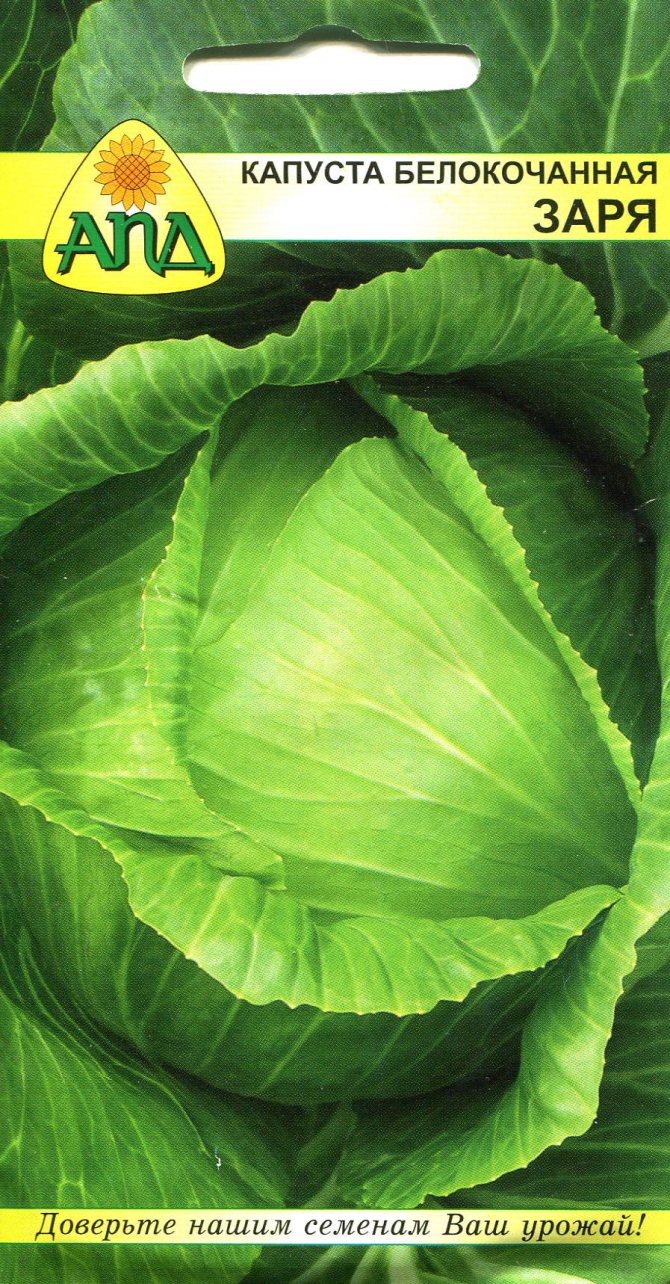

"Zarya"
Two varieties have been bred under this name - the Zarya MS variety and the Zarya F1 hybrid. The hybrid form has more benefits. The heads of cabbage are medium-sized, reaching two kilograms, the shape is even.
Ripening period - 110 days. The leaves of the head of cabbage are herbaceous-green on the outside, but with a waxy coating, smooth, glossy in appearance and to the touch.
Salads and main dishes, soups, hodgepodge - this culinary "gift" of excellent taste for pickling, pickling, canned products is not suitable. It is also stored for a short time, a maximum of a month.
The variety bears fruit actively, abundantly and practically at the same time. Since the heads of cabbage are resistant to cracking, they can be kept on the vine for up to two weeks.
Advice! To extend the harvest, it is recommended to sow seeds for seedlings in three stages, every 10 days, starting from the first days of March. The short growing season allows three waves of the crop to ripen.
"Malachite"
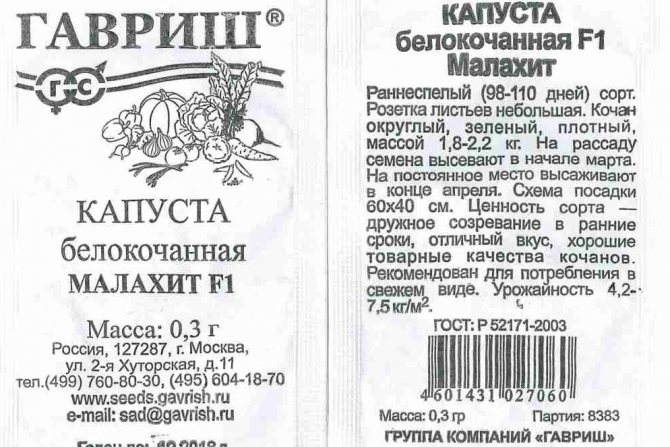

"Malachite", seeds
Hybrid early species, ripens in a hundred days. Heads of cabbage are smooth, with high and persistent flavor characteristics, up to two kilograms in weight.
Marketable fruits, the degree of transportability of which is high. The technical density of the head is slightly below average, the soft, juicy leaf is green on the outside. On the cut - white with yellow.
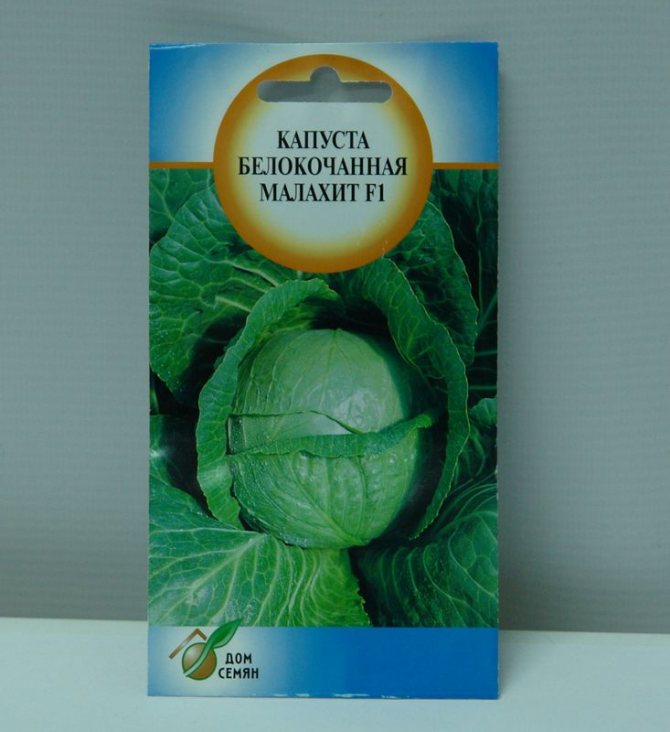

White cabbage "Malachite"
It can be grown both in seedling and non-seedling methods. Does not crack. Differs in productivity up to 6 kg per square meter. Can be eaten fresh or canned.
By the way! The fruits of this variety contain not only a lot of ascorbic acid, but also sodium, magnesium, potassium, calcium, other salts, iron and even silver.
"Early Ditmar"


The ripening period is 105-110 days, the yield is quite high - up to 5 kg per m2. Leaves are silky, bright yellow-green, small stalk. In terms of taste, it is close to Peking cabbage. The leaf rosette is compact, the fruit is oval. Good resistance to diseases, bacterial rot. The disadvantages of the variety include a high risk of cracking. For this reason, picking quickly is required as soon as it reaches technical ripeness.
Cabbage salad for the winter "Autumn"
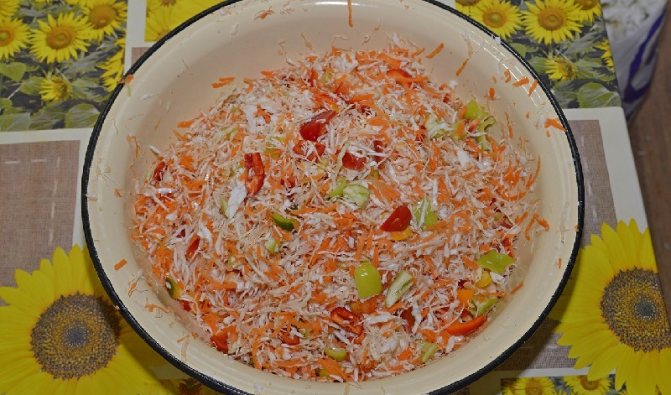

Ingredients
- 5 kg of white cabbage
- 1 kg of carrots
- 1 kg of onions
- 1 kg bell pepper
- 350 g sugar
- 4 tbsp. l. salt
- 0.5 l of 9% vinegar
- 0.5 l of sunflower oil
Preparation
- Chop the cabbage, chop the onion and pepper, grate the carrots.
- Mix the ingredients gently, don't you think.
- Add sugar, salt, vinegar and sunflower oil, stir again.
- Put it in the banks, crushing it with your fist. After three days, close the lids and put them in the refrigerator. Such cabbage is stored for a long time and does not lose its taste.
Copenhagen Market
A variety bred and brought from Denmark, which has proven itself among cabbage plantings in central Russia.The ripening period is 100 days, the yield is average, usually up to 4.5 kg per 1 sq. M. It has a high cold resistance, easily tolerates short-term return frosts and cold summers.


Heads weighing 2-2.5 kg do not crack, which is a great advantage of this selection. Fruits better on loamy soils, picky about light. In low light, the heads of cabbage are looser, and the leaves in them are small. In open ground, seedlings are transferred for 50-55 days, usually in mid-May.
It is interesting! Cabbage juice has antimicrobial and anti-inflammatory properties.
Gurian cabbage
- Head of white cabbage
- Beet
- Garlic
- Hot pepper pod
- Black peppercorns
- Salt
- Steep boiling water
How to cook Gurian cabbage:
1. Cut the head of cabbage into pieces together with the stump, cut the beets into slices, peel the garlic, cut the bitter pepper into pieces.
2. Put in layers in a deep saucepan: cabbage pieces, then beetroot circles, then garlic cloves, and mountain pieces. pepper, black pepper. peas, and so we put layer by layer so that to the edges of the pan where we put all this there is still free space upwards of about 5 cm.
3. Boil water in another saucepan and put salt in it, the brine should turn out to be slightly saltier than you prefer to salt the broths of the first courses.
4. Fill the stacked layers of vegetables with hot brine, put the oppression in the form of a plate turned upside down and close the lid. After 4-5 days, the cabbage is ready.
5. The brine from under it is similar to beet kvass and it is also very good. useful for the digestive tract. Try to cook, bon appetit!
"Golden hectare"
Popular due to its high yield and good keeping quality. In optimal conditions, it can give up to 7 kg from 1 sq.m. and stored for up to 5 months. Resistant to dry conditions, but susceptible to diseases and pests, therefore, requires high-quality preventive measures.
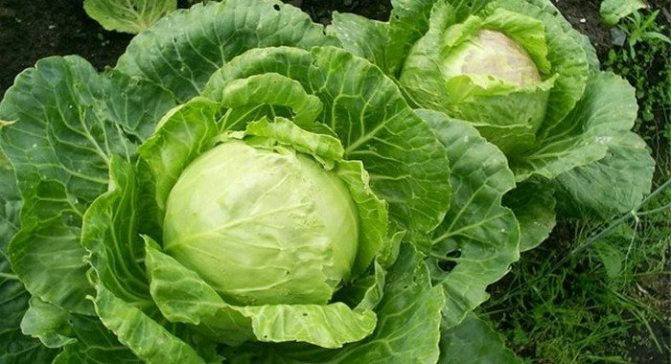

It is not afraid of untimely cutting, due to which it allows harvesting upon reaching consumer readiness, and not technical ripeness, for storage until late winter cabbage collection is obtained.
A feature of the variety is its exactingness to soil fertility. Prefers black soil, responsive to regular feeding.
Quick-salted cabbage
- White cabbage - 300 gr.
- Carrots - 200 gr.
- Bulb onions - 3 pcs.
- Garlic - 2-3 cloves
- Table vinegar 9% - 1.5 tbsp. spoons
- Water - 0.5 l.
- Sugar - 5 tbsp. spoons
- Salt - 2 tsp
- Allspice - peas - 15 pcs.
- Bay leaf - 3 pcs.
- Hot pepper - 1 pod
How to cook quick salted cabbage:
1. Wash the cabbage and chop into thin strips. Peel, wash and grate the carrots. Peel the onion, rinse with cold water and cut into rings.
"Transfer F1"
Small rounded heads of cabbage grow in 110 days, their weight does not exceed 1.5 kg. It is appreciated for stable, friendly response, resistance to cracking and disease, high productivity. The upper leaves are white-green, the inside is pure white. Designed for quick fresh consumption. You can ferment, but the finished product should also be consumed in a short time.
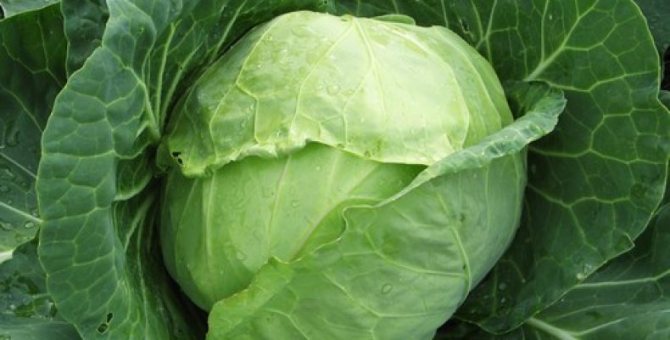

Instant spicy cabbage
- Fresh cabbage - 2 kg.
- Carrots - 4 pcs.
- Large winter garlic - 4 cloves
- Salt - 2 tbsp spoons
- Peppercorns - 10 pcs.
- Carnations - 5 pcs.
- Bay leaf - 4 pcs.
- Vegetable oil - 1/2 cup
- Vinegar 9% - 1/2 cup
How to cook instant spicy cabbage:
So, chop 2 kg of fresh cabbage, grate 3-4 carrots on a coarse grater, chop 4 large winter garlic cloves.
Pour a little cooled marinade:
1 liter of water - 1/2 cup sugar, 2 tbsp. l coarse salt with a slide, 10 pieces of peppercorns, 5 cloves, 4 pcs. bay leaf - boil for 10 minutes, add 1/2 cup vegetable oil and 1/2 cup 9% vinegar.
Press down with oppression until it cools completely, transfer to a 3-liter jar and put in the refrigerator for a day.
Then the cabbage is ready to eat. In the refrigerator, it is well stored under a regular lid, but it does not need it.
"Zarya"
Has two varietal varieties - "Zarya MS" and hybrid "Zarya F1". Second
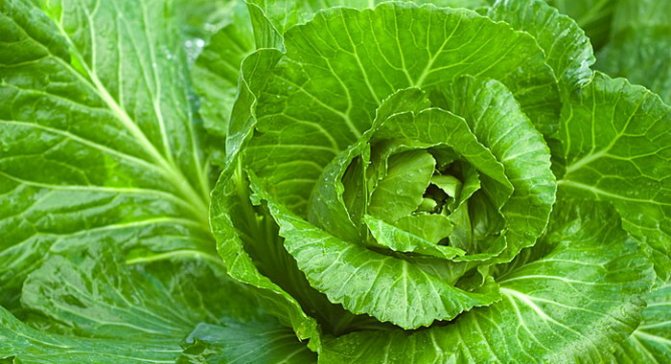

preferable due to a number of advantages. These include the preservation of integrity after reaching technical ripeness (stored on the vine for up to 2 weeks), amicable active return, a reduced risk of infection and damage by pests. The outer leaves are grassy green, smooth, shiny, with a waxy bloom to the touch. After collection, it requires consumption within a month. It is not suitable for pickling and canning, but it has excellent taste in salads, cabbage soup and other main dishes.
Varieties of early white cabbage for different regions
Early ripening varieties and hybrids of white cabbage differ in their origin and consumer qualities. As a result of field tests, recommendations were developed on the optimal assortment for specific Russian regions.
For the middle lane
- Orient Express F1
- Solo F1
- Sprint F1
- Transfer F1
- Express F1
For Moscow region
- Garden head
- Zarya MC
- Malachite F1
- Orion Hunter F1
- First love F1
For Siberia and the Urals
- Explosion F1
- Dove
- Number one polar K 206
- Sugar Lightning F1
- Siberian pyramid
"Present"
An early maturing variety with high productivity - from 6 to 10 kg per sq.m. Collection time begins 120 days after germination. Rounded-flat forks are large enough and can be transported over long distances within a short period of time.
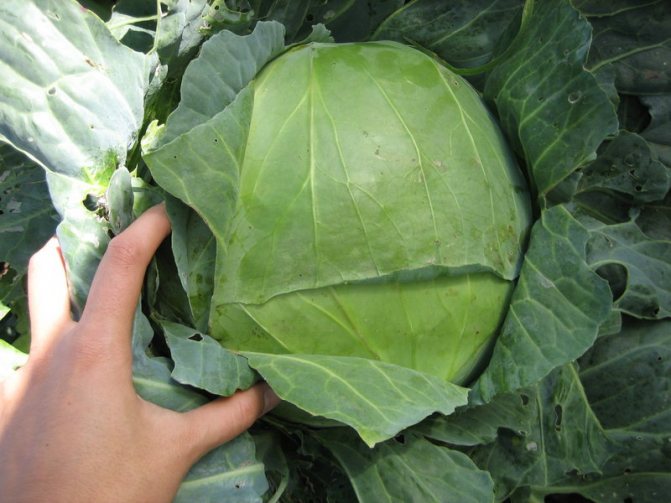

Keeping quality can be considered high for early cabbage; it can be stored for up to 5 months. Almost does not crack. Due to good transportation and other qualities, it is often grown for sale.
In order to have fresh cabbage throughout the season, it is recommended to plant the seedlings in three stages, 10 days apart. This will remove the problem of storing early harvest and will make it possible to cut ripe heads of cabbage throughout the summer.
Early white cabbage requires more careful, scrupulous care and attention than late-ripening varieties. It is more often damaged by pests, gets sick more, reacts more actively to weather changes, untimely, poor or, on the contrary, too abundant watering. She also suffers more from weeds. Providing proper care and choosing the varieties most suitable for the region and its climatic characteristics will make it possible to have fresh white cabbage on the table uninterruptedly and of the highest quality.
Crispy sauerkraut
How to make crispy sauerkraut:
1. Wash the cabbage, remove (if necessary) the top spoiled leaves, cut into 4 parts Now it is convenient to cut off the stump and finely chop the cabbage. Chop all the cabbage.
2. Wash carrots, peel and coarsely grate.
3. In a large bowl, begin to grind the cabbage and salt. We take a small handful of cabbage, salt and shake with our hands to make the cabbage softer and let the juice flow. Next, add some of the carrots and mix. Next, add a small amount of cabbage again, salt and knead, add carrots. So we grind all the cabbage, tamp it so that its juice covers the entire surface of the cabbage. At first, there won't be a lot of juice, don't worry, leave the cabbage for a couple of minutes and it will let in a sufficient amount of juice.
4. We put a load on the cabbage. We put a wooden rolling pin or a wooden spoon on the side so that gases come out, and leave it overnight. The next day (or in a day) bubbles should appear. This is a sure sign that the process has begun. The time will largely depend on the air temperature at home, this process may take more or less time. We remove the load and often pierce the cabbage with a rolling pin to release the gases.If you do not do this, the cabbage may turn out to be too sour.
5. Then we put the oppression again and so we cook our cabbage for 3-4 days. After three to four days, the brine will become lighter and the bubbles will practically disappear. This is a sign that our cabbage is ready. We transfer it to a clean jar, fill it with brine so that it covers the surface of the cabbage, cover it with a lid and then store it in the refrigerator.
Please tell me, who doesn't like sauerkraut or pickled cabbage? Probably it will be difficult to find such a person! Perhaps, of all the blanks that we try to cook, these are some of the most beloved and popular!
It's too early to ferment cabbage. The cold has not yet come to store it. Perhaps ferment and store in the refrigerator ... But it's time to cook pickled cabbage. Cabbage has already gained strength and all the required vitamins, and therefore it will turn out delicious, crispy and healthy.
You can pickle cabbage and harvest it for the winter by screwing the lids. But today we will cook instant pickled white cabbage, which is not necessary to roll up in jars. As a rule, the prepared snack can already be eaten the next day. And it is perfectly stored in the refrigerator for a whole month, without losing its taste at all.
It is very convenient to prepare such an appetizer ahead of time, before some holiday. She is always welcome at the festive table for any occasion. Whether it's a birthday or New Year!
I have a lot of interesting pickled cabbage recipes. And I have already shared one of them with you. This is a very tasty dumpling cabbage that is cooked with beets and carrots. And today I will share a few more delicious recipes that I think you will like. These will be both very simple recipes and recipes a little more complicated. And everyone can choose a recipe for themselves.
How to feed cabbage
Before the ovaries of early cabbage form heads, the plant is fed with nitrogen fertilizers, and when the head of cabbage is ripe, supplemented with potassium. Top dressing begins to be introduced from the seventh day after planting cabbage and, first of all, for this, urea is used, diluted in water at the rate - 5 teaspoons per bucket... This amount of fertilizer is enough for watering 3 m2 of cabbage beds.
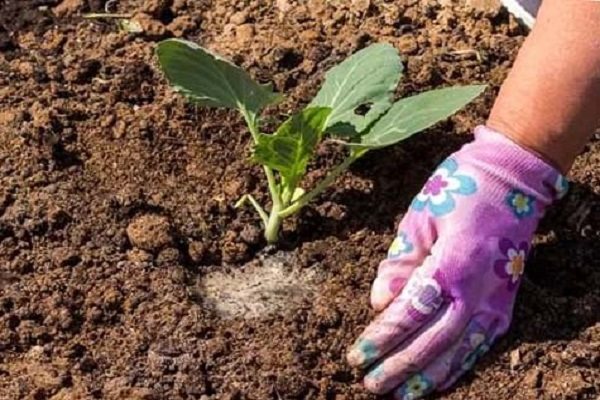

Another 5-7 days later, cabbage, to form a larger head of cabbage, is stimulated with an infusion of chicken manure diluted with water 24 hours before watering, then settled, strained and supplemented with clean water in a ratio of 1:10.
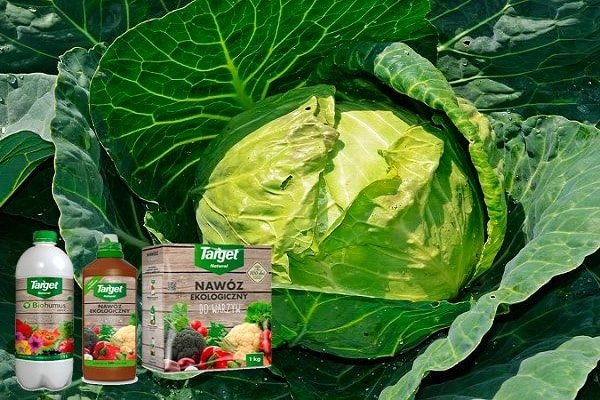

Site preparation
Of great importance is the preparation of the site on which the early cabbage will grow. Planting and caring for plants begins in the spring. The site for early cabbage must be prepared in the fall. To do this, it is dug up and fertilized. As fertilizers, it is effective to use humus, manure and compost in the amount of 1-1.5 buckets per m2.
In addition, mineral fertilizers are added in the amount of 40 g of superphosphate per 1 m2 and half as much potassium chloride. The acidic soil is limed.
With the arrival of spring, the land on which the early cabbage will be planted is dug up, loosened and fertilized. Manure (one bucket per square meter) and wood ash (1-2 tbsp. Per square meter) are used as fertilizers.
Growing seedlings
Cabbage seeds are sown for seedlings according to the same rules for any garden crops:
- Prepare a shallow container for seedlings - wash well, then carry out a disinfecting rinse with a dark solution of potassium permanganate.
- Install a thin layer of drainage - small pebbles, expanded clay, even egg shells will do.
- Prepare soil mixture - sod land, peat, sand, in equal amounts. If the mixture is prepared independently, be sure to ignite or treat with a solution of potassium permanganate. Store seedling mix does not need this procedure. The same goes for seeds.Before planting, non-coated seedlings should be immersed in a weak solution of manganese for 20 minutes.
- Arrange the seeds in a prepared container - at a distance of 3 cm from each other. The depth of the bookmark is 1–1.5 cm. Cover with soil, press down a little.
- Spray the soil with a spray bottle and cover with foil... Make sure that the soil remains moist, periodically lift the film. When the first shoots appear, remove completely.
- Saplings dive - in the phase of 1–2 true leaves.
- Plant in the garden - when 4–5 leaves appear.
From the moment the seeds are sown to the moment they are planted in the ground, it usually takes 50–55 days. By that time, the height of the seedlings should reach 12-15 cm.
What does it mean?
An early variety of cabbage is characterized by an early sowing period, low yield, small heads of cabbage are not intended for long storage. Depending on the growing season, varieties are divided into early maturing, mid-maturing and late-maturing crops.
Important! It is in spring cabbage that contains as much vitamin C as citrus fruits. The high content of carotene and choline, which prevent atherosclerosis, strengthen blood vessels.
Landing in open ground
When the air temperature exceeds 17 ° C and the soil temperature is 14 ° C, early cabbage seedlings are planted in the ground.
Seedlings of different varieties are planted according to different schemes:
- early white and red cabbage - 30 × 40; - broccoli cabbage - 30 × 60, in order to develop lateral shoots - 40 × 60; - Brussels sprouts - 60 × 70; - early kohlrabi - 30 × 40; - Savoy cabbage - 70 × 30; - early cauliflower - 30 × 60.
It is best to plant cabbage in cloudy or rainy weather. In order to prevent the soil from compaction and crusting, it must be regularly mulched or loosened.
How to grow a white vegetable?
Stores and prices for material in Moscow and St. Petersburg
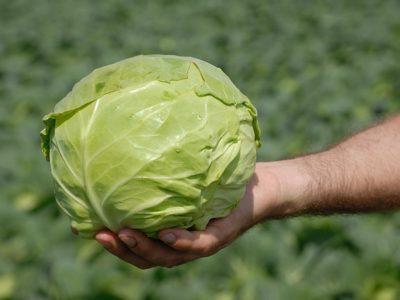

In Moscow, seeds and seedlings can be purchased in the online store of the Russian Garden nursery. The Express variety of 6 pieces in a cassette costs 155 rubles. At metro stations Vladykino, Maryina Roshcha, seedlings of June, Start, Kazachok for 20 rubles. a piece. In the Garden Center of the Garden Master you can buy seeds for 20 rubles. for a bag, seedlings Fast and Furious f1, Nakhalenok f1 40 rubles each. a piece.
In St. Petersburg, you can buy seedlings in the OBI hypermarket, a cassette with 6 seedlings 149 rubles. A wide selection in the online store seeds Kazachok f1 10 rubles., Parel f1 38 rubles., Rayma f1 31 rubles. A varied assortment in the "House of Seeds" on Komendntsky Prospect, in the "July" store on Kronstadskaya Street, "Ogorod Market" on Bukharestskaya Street.
It is convenient to order seeds through online stores... You can pick it up at own expense, in Moscow there are five points of delivery, delivery is available.
When is the best time to sow seeds?
When should you plant a crop to get healthy and strong seedlings? On average, seeds should be planted in mid-March. The first shoots will appear in 10 days, after 50-55 days, the seedlings can be planted in the ground. At the same time, we take into account the weather conditions.
Choosing a place for growing seedlings
We sow seeds in a tray, after moistening the soil well... Before the emergence of seedlings, we do not water, this is a way to prevent black leg disease. After the emergence of seedlings, we thin out and after a couple of weeks we plant them in separate pots.
You can use a gentle method of transplanting - immediately plant the seeds in separate containers.
Soil preparation
Add ash to one part of the sod land with humus at the rate of 10 tablespoons per 10 kg, mix. Ash acts as a source of macronutrients and antiseptic, which prevents the formation of a black leg.
Planting in an apartment and open ground
In the apartment, seedlings are grown on the windowsill, preferably on the southwest or southeast side. In March, it is necessary to increase the daylight hours to 14 hours; for this, white fluorescent lamps are used.


An important condition will be protection against overheating coming from the batteries and hypothermia during the ventilation of the room. Seeds germinate within 2 days at a temperature of +20.
It is planted on the site when the air temperature is more than +17. Before planting in open ground, the soil is enriched with organic elements: peat or humus. Do not plant cabbage in an area where cruciferous crops have grown. The best place where the predecessors were legumes, potatoes, cucumbers.
Seeds are sown in May.
- It is necessary to make holes, and put ash on the bottom of each.
- Then moisten the soil in several approaches.
- Deepen 3 seeds by 2 cm into the hole. Cover with a covering material.
- After germination of seedlings, leave the strongest ones.
Not all regions can afford to sow seeds immediately on the site. For example, in the Central, North-Western districts, it is better to choose the seedling method.
You can learn about the best varieties of cabbage for open ground in this article.
Temperature regime
Before the emergence of shoots, the temperature of +20 degrees is considered the norm... Further, the seedlings are hardened to +8 degrees at night, in the daytime to +15. This technique strengthens the seedlings, preventing stretching.
Watering
It is carried out as needed, preferably in the morning or in the evening. Drying and waterlogging of the soil must not be allowed. Optimum water at room temperature is from +18 to +23.
Top dressing
Seedlings are fed twice during home cultivation... The first time in the stage of the 2nd or 3rd leaflet, then a week later. 20 grams of ammonium nitrate and superphosphate are mixed with 10 grams of potassium chloride and dissolved in 5 liters of water. You can add trace elements per gram of boric acid, sulfuric acid manganese and sulfuric acid copper. The same composition is fed before planting in the ground.


